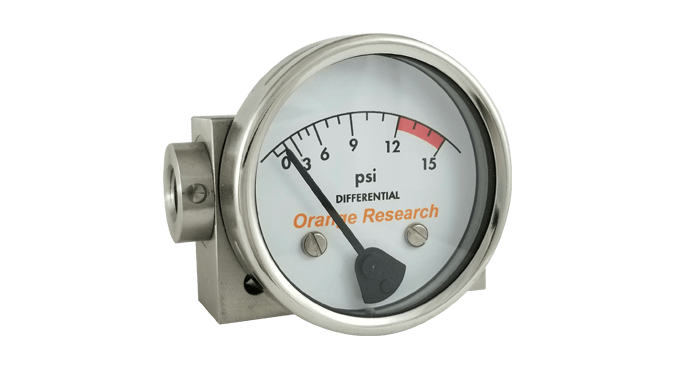Piston DP Gauge Bypass
Orange Research supplies two types of differential pressure gauges:
Piston sensor type➞ for liquids applications only
Diaphragm sensor type➞ for gas or liquid applications

Our 1200, or 1300 series piston sensor gauges are intended for liquid systems only. When testing them please apply hydraulic pressure (not gas) to the high-pressure port, leaving the low-pressure side vented to atmosphere. Do not block the low-pressure side.
During operation or when testing, a slight amount of fluid may bypass the piston. Do not be alarmed if you notice this. It is expected and normal. There is a Teflon seal inside our piston units which minimizes any fluid migration.
Piston sensor gauges are designed for difficult environments and high-pressure applications, with working pressures that are much higher than the differential they are testing. This makes them very durable and rugged and allows them to hold calibration for many years. They have advantages over the Bourdon Tube, Bellows, or Diaphragm designs, which can be damaged by over pressure or pressure spikes.
Our piston sensor gauges will register accurate measurements regardless of the slight amount of liquid bypassing the piston sensor.
Please do not apply gas to the high-pressure side. This would result in a great deal of piston bypass and the results would be meaningless.
If you do not have a hydraulic test stand to test our piston sensor gauges, use a hydraulic handpump. These are available with a pressure gauge to easily test our units and are very common. Do not use a pneumatic test pump.
Please contact us with any questions you may have. We’re happy to assist you!


 WARNING: Some of our products contain Nickel, a chemical known to the State of California to cause cancer. For more information go to:
WARNING: Some of our products contain Nickel, a chemical known to the State of California to cause cancer. For more information go to: